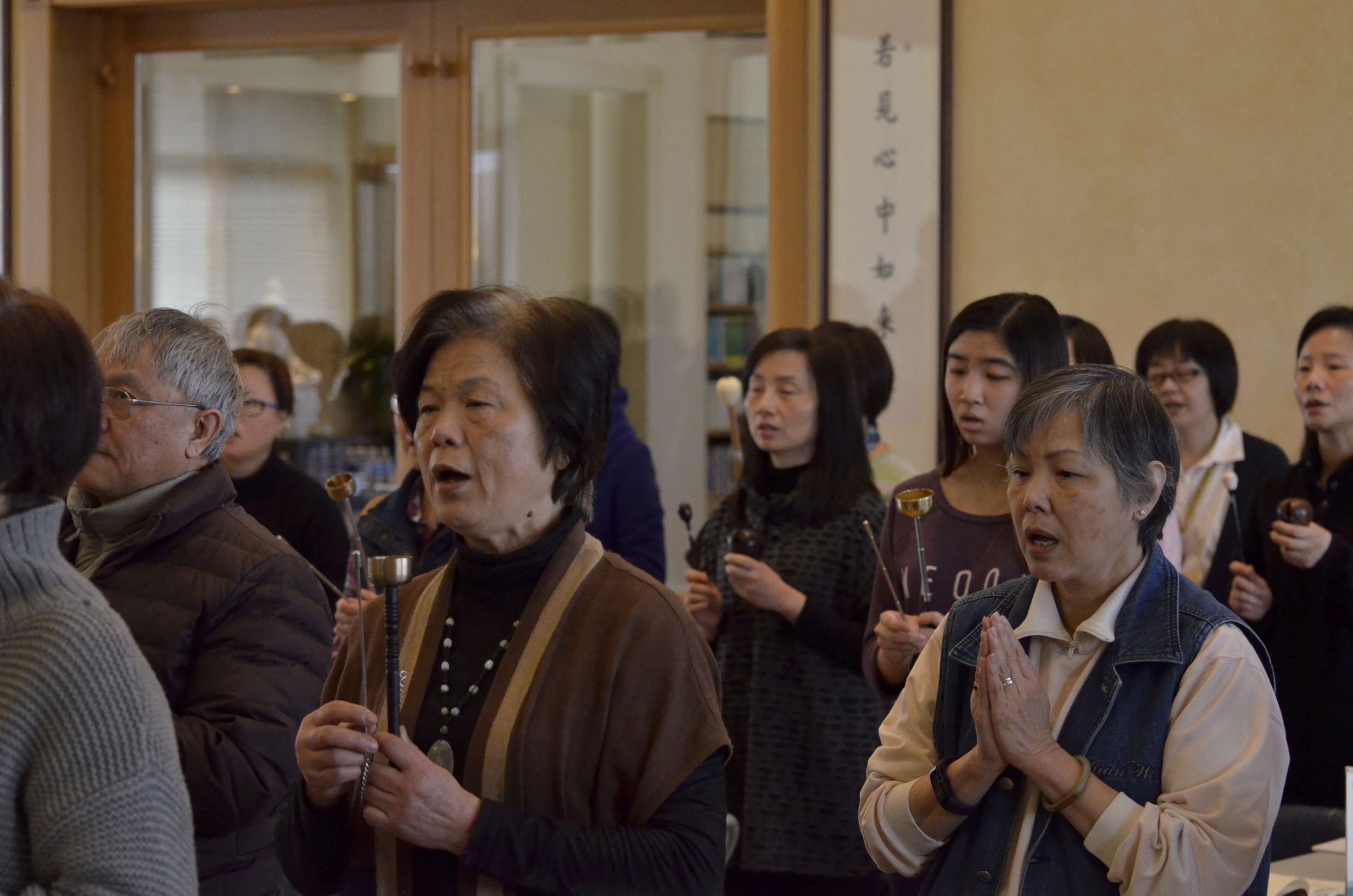Buddhist Chants and Practice

On February, 25, Dharma Drum Vancouver Center held its first Buddhist Chants and Practice class. This is the first of two classes on applying chanting to Chan practice.
We learned about the origin of Buddhist chants in India, where Buddha’s teachings were not initially recorded in writing and were instead passed down orally through chanting. Buddhist chanting emanates from one’s calm mind and compassion. There are five benefits of chanting - it energizes the body, improves memory, recharges the mind, sounds soothing and facilitates the reciting of Buddha’s sutras.
The Characteristics of Buddhist Chants

Chanting cultivates a respectful mind, diminishes ill-thoughts and promotes mental focus to clear the mind of wandering thoughts. Chanting helps us to train our body and mind, allowing us to self-reflect and contemplate more readily and frequently.
Sounds and Methodology

We are taught the proper way to form sounds to chant through breathing, being aware of the present, keeping rhythm and tempo, relaxing the jaw and maintaining a smooth, even sound.
Chanting is not an exercise in solo performance. Chanting is not singing. It is about reciting with the group, blending our voices in harmony and creating rhythms that stabilize one’s body and mind. Only by following the correct methodology can the true effect of chanting be felt.
Dharma Instruments

Several dharma instruments accompany Buddhist chants and we were introduced to them and shown how to use them. We practiced on the hand chime and small wooden fish while Fashi demonstrated the use of the big gong, drum and bell, and wooden fish.
The second of the 2-class series will resume on Saturday, March 11 at 2 pm.
By Daphne Tsai